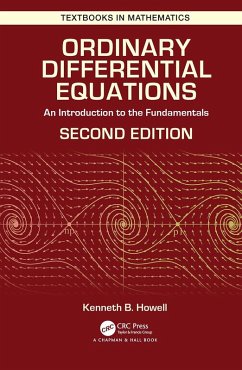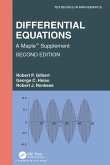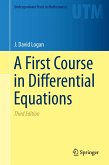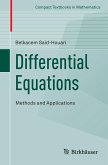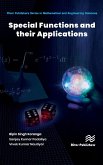The Second Edition of Ordinary Differential Equations: An Introduction to the Fundamentals builds on the successful First Edition. It is unique in its approach to motivation, precision, explanation and method. Its layered approach offers the instructor opportunity for greater flexibility in coverage and depth.
Students will appreciate the author's approach and engaging style. Reasoning behind concepts and computations motivates readers. New topics are introduced in an easily accessible manner before being further developed later. The author emphasizes a basic understanding of the principles as well as modeling, computation procedures and the use of technology. The students will further appreciate the guides for carrying out the lengthier computational procedures with illustrative examples integrated into the discussion.
Features of the Second Edition:
Emphasizes motivation, a basic understanding of the mathematics, modeling and use of technology
A layered approach that allows for a flexible presentation based on instructor's preferences and students' abilities
An instructor's guide suggesting how the text can be applied to different courses
New chapters on more advanced numerical methods and systems (including the Runge-Kutta method and the numerical solution of second- and higher-order equations)
Many additional exercises, including two "chapters" of review exercises for first- and higher-order differential equations
An extensive on-line solution manual
About the author:
Kenneth B. Howell earned bachelor's degrees in both mathematics and physics from Rose-Hulman Institute of Technology, and master's and doctoral degrees in mathematics from Indiana University. For more than thirty years, he was a professor in the Department of Mathematical Sciences of the University of Alabama in Huntsville. Dr. Howell published numerous research articles in applied and theoretical mathematics in prestigious journals, served as a consulting research scientist for various companies and federal agencies in the space and defense industries, and received awards from the College and University for outstanding teaching. He is also the author of Principles of Fourier Analysis, Second Edition (Chapman & Hall/CRC, 2016).
Students will appreciate the author's approach and engaging style. Reasoning behind concepts and computations motivates readers. New topics are introduced in an easily accessible manner before being further developed later. The author emphasizes a basic understanding of the principles as well as modeling, computation procedures and the use of technology. The students will further appreciate the guides for carrying out the lengthier computational procedures with illustrative examples integrated into the discussion.
Features of the Second Edition:
Emphasizes motivation, a basic understanding of the mathematics, modeling and use of technology
A layered approach that allows for a flexible presentation based on instructor's preferences and students' abilities
An instructor's guide suggesting how the text can be applied to different courses
New chapters on more advanced numerical methods and systems (including the Runge-Kutta method and the numerical solution of second- and higher-order equations)
Many additional exercises, including two "chapters" of review exercises for first- and higher-order differential equations
An extensive on-line solution manual
About the author:
Kenneth B. Howell earned bachelor's degrees in both mathematics and physics from Rose-Hulman Institute of Technology, and master's and doctoral degrees in mathematics from Indiana University. For more than thirty years, he was a professor in the Department of Mathematical Sciences of the University of Alabama in Huntsville. Dr. Howell published numerous research articles in applied and theoretical mathematics in prestigious journals, served as a consulting research scientist for various companies and federal agencies in the space and defense industries, and received awards from the College and University for outstanding teaching. He is also the author of Principles of Fourier Analysis, Second Edition (Chapman & Hall/CRC, 2016).

